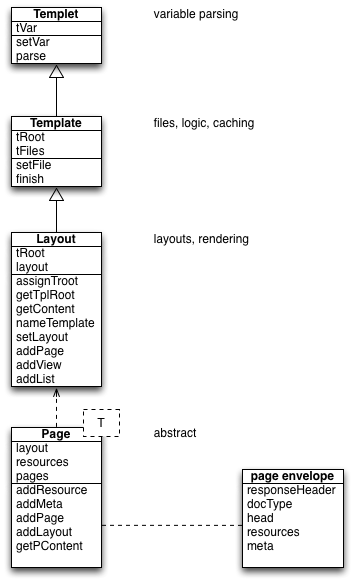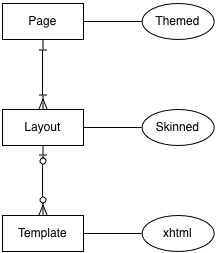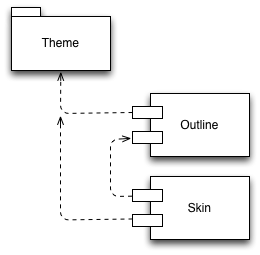Difference between revisions of "GlPage"
m |
m |
||
| Line 3: | Line 3: | ||
Whereafter a entity diagram is shown when entities are preferred over objects. | Whereafter a entity diagram is shown when entities are preferred over objects. | ||
| − | Finally the theme is visual depicted suggesting it is a package. Somehow it actuallay is, because it consists of resources and layouts (renamed to | + | Finally the theme is visual depicted suggesting it is a package. Somehow it actuallay is, because it consists of resources and layouts (renamed to ''outline''). |
[[File:glPage_0.png]] | [[File:glPage_0.png]] | ||
Revision as of 11:24, 9 September 2014
For a visual overview of what glPage is and does, a class hierarchy is diagrammed below.
Whereafter a entity diagram is shown when entities are preferred over objects.
Finally the theme is visual depicted suggesting it is a package. Somehow it actuallay is, because it consists of resources and layouts (renamed to outline).
The template class is split into a templet class, doing all the parsing, and a template class doing file access and caching. The templet accepts a parameter as the template text and therefor cannot be 'finished'. The layout class extends template to hold the layout-nodes. The page class is in fact a controller and contains static variables, so it cannot instantiate.
Clearly shown that the new style is building a tree from page -> layout -> template.
The template entity can be used outside the tree too. There is not Templet entity since it is just a tool.
The theme is depicted as a package that contains the components outline and skin. The term outline is chosen to be different from the term layout.
A theme consists of resources (not shown) like stylesheets, scripts, images (like icons, backgrounds or overlays) and the like.


